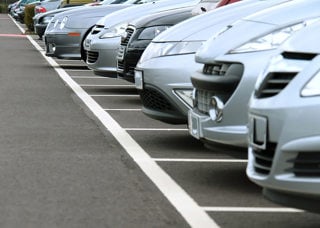Moves by public sector organisations to bring their grey fleet mileage reimbursement rates inline with Government-approved rates are likely to be met with severe opposition.
Fleet News discovered last year that many public sector bodies are paying grey fleet drivers as much as 45% far more than official AMAP rates.
Now councils wanting to bring payments inline with AMAP to save money are becoming concerned of potentially adverse reactions.
Social workers in Derby began a 'car strike' last month after the city council said it planned to withdraw their £98 a month car allowance and limit mileage payments to the AMAP rate of 40p per mile.
They were getting as much as 60.1p per mile.
Workers downed keys saying they would not use their own cars for business travel until the city council reconsidered its plans, which it said would save £800,000 per year.
The council has now reached agreement with unions to pay AMAP rates, but only after it was forced to pay compensation of up to £1,200 to each driver.
“We are facing hard economic times and it is essential that savings are made,” said Harvey Jennings, leader of Derby City Council. “We expect that everybody involved in the dispute will now return to work as usual.”
Hampshire county authority also wanted to save cash by cutting mileage rates. It hoped to save £1.8 million annually slashing payments from 53.8p to AMAP rates, which drop to 25ppm after the first 10,000 miles, in 2010-11.
However it was forced to compromise during negotiations with unions, which saw it settle for rates of 47p per mile for higher-paid staff, while lowest-paid employees still get 53.8p.
“It was a compromise,” a council spokesman told Fleet News. “There was a need to negotiate, but they understood our need to do this.”
It is estimated that grey fleet use in the public sector already makes up around 57% of total road mileage, or 1.4 billion miles every year.
But this figure could rise if more public sector bodies follow Cambridgeshire County Council’s move to become reliant on the grey fleet for the vast majority of its transport needs.
It told delegates at a recent Automotive Leasing conference that the move was driven by a need to cut transport costs.
“It made sense for us to do this, we don’t have essential car users and there is no statutory duty for us to provide vehicles,” a council spokesman told Fleet News.
Cambridgeshire now pays AMAP rates and has done away with additional annual lump sum payments.
But many councils continue to pay more than the official rates, which often match Local Government Employers’ guideline rates.
Its current rates for essential user in cars over 1200cc include an annual lump sum of £1,239, then 50.5p per mile for the first 8,500 miles and 16.4p per mile thereafter.
The guideline for casual users is 65p per mile up to 8,500 miles and 16.4p thereafter.
According to mileage audit and fuel management provider, TMC, a number of councils have contacted it with concerns that staff may find ways to drive extra miles if lower rates are introduced.
"It's fair to say that the whole system of public sector grey fleet mileage expenses has got out of hand,” said TMC managing director Paul Jackson.
“Bringing it back under control will be doubly difficult because these payments are widely seen as a legitimate way of supplementing pay. Mileage payments are becoming an employee relations flashpoint as cost-cutting exercises begin to bite.”
He said employees are going to be “concerned” by any attempt to bring payments into line with Government-approved rates.
For all the latest advice and information on fleet management, have a read of our fleet operations section.



















adamrollins - 08/07/2010 14:06
Not that I would like to comment on the levels of expenses drivers receive for a mileage rate (would I?!), but I do hope that claimants are recording their business miles accurately. Proper mileage management in this case would perhaps guard against a little insult being added to the injury.